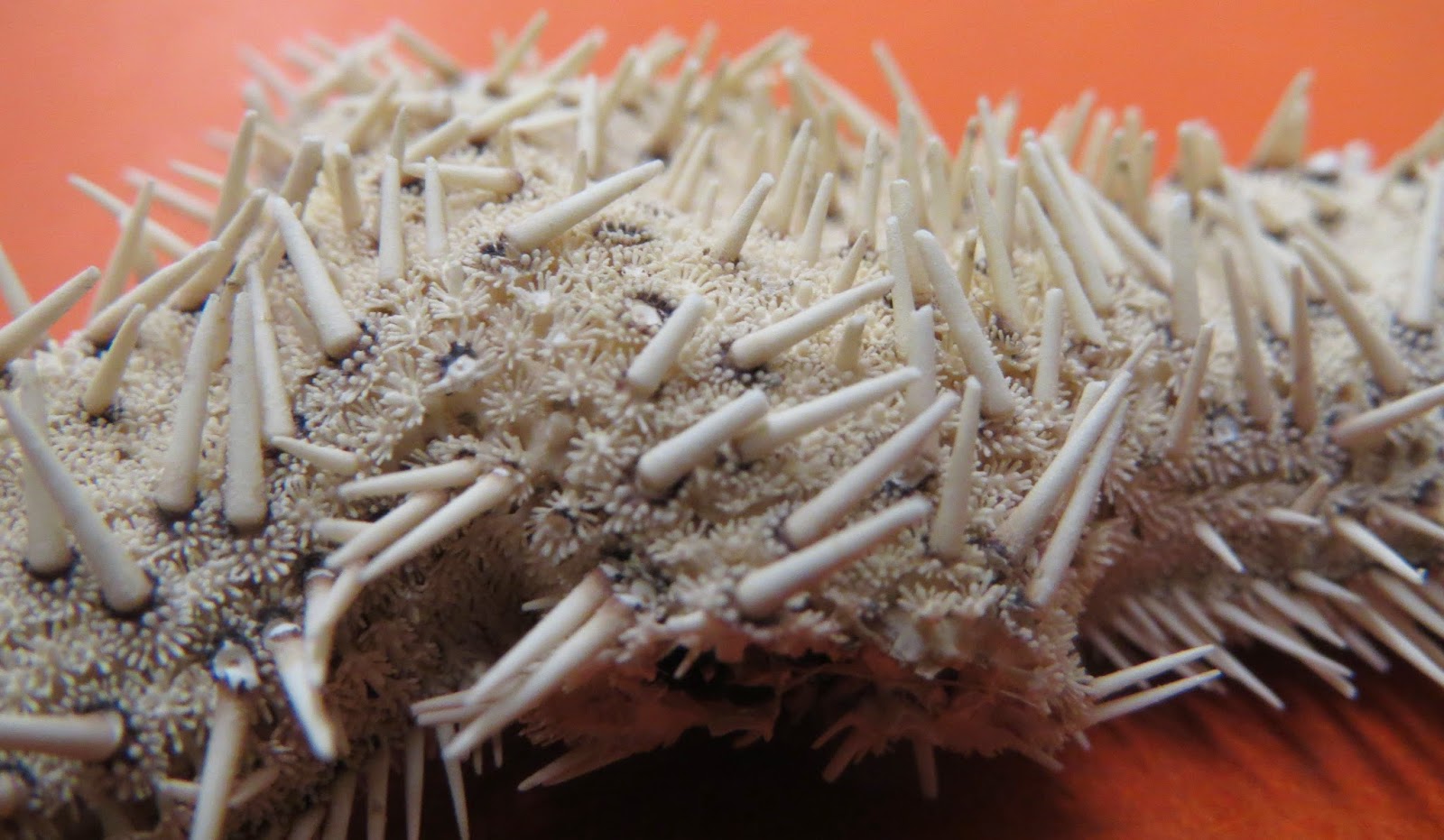 |
| Luidia clathrata from the Wikipedia page! thank you! |
Some species, such as this Luidia alternata from the Southeast United States were recently mistaken for brittle stars by some, no-doubt, well intentioned but misinformed journalists! (here) Just to clarify: these are NOT brittle stars. Go here to see some characters you can use to tell them apart.
I'm talkin' about sea stars in the genus Luidia, which is the only genus in the family Luidiidae. There are 49 species which are found all over the world, mostly in shallow tropical to temperate waters. Some get deep, but not very.. None occur at high latitudes (i.e., Arctic or Antarctic).
This group of starfish is named for the Welsh naturalist Edward Lhuyd who went by the latin name Luidius!

Luidia was an important animal in the big "Which starfish is primitive" arguments in the early 20th Century, and there was one time when this animal was part of a big argument that raged in the pages of the journal Nature...
Let's learn about Luidia!
1. Where Do They Live?
Sea stars in the genus Luidia typically inhabit shallow-water, tropical to temperate water places among sand or mud. Basically, wherever loose sediment is found. In this respect, they are similar to the better known "sand stars" in the genus Astropecten. (Also a reason why common names don't have much use for scientists).
They use their spines and feet to bury themselves into the sand, or mud or whatever sediment they live in/on....
I would note that the reason you often see these washed up after storms is because so many of these stars live on sandy bottoms. When you have any kind of turbulence they get "blown" up and washed onshore.
2. What Do They Look Like?
Luidia can be pretty plain looking. But body form in these is pretty distinctive.
Arms are long and straplike (Luidia clathrata from the SE Atlantic shown here).
And kinda flat... (Luidia clathrata shown here)
A close up look shows a lot of square-shaped plates known as "paxillae" with many tiny spinelets...
These vary in size on the center of the disk relative to those on the sides.. Spines are present on the lateral edges of the animal....
Some have elaborate patterns.... (L. maculata from Singapore)
Some with sharp spines!
Even the pointed tube feet have stripes sometimes...!
3. Diversity: How many kinds are there?
As mentioned earlier, there's some 49 species of Luidia known. They occur in the Atlantic, Pacific and Indian Oceans in temperate to tropical waters. A few live in deeper water.
Some, such as this Luidia clathrata from the SE Atlantic coast of North America are 5-rayed and kind of plain looking. Albeit with some coloration..These are pretty medium sized (see pic above) but the disk is maybe about the size of a quarter or a half dollar...

Others, such as this Luidia superba from the Galapagos are HUGE. This species is one of the largest known (see here). This species gets to be easily 2 feet across....
Others, such as this Luidia latiradiata have kind of a throwing star shape...
Several Luidia species have MORE than 5 arms, often 12-15. You can see from some of the other videos and pics..these get pretty big also!!
4. What Do They Eat? and How?
Luidia (and the family Luidiidae) are members of the Paxillosida, which is to say the "Mud stars." Almost all of these swallow either prey in sediment or sediment in order to find food.
Luidia is predator and feeds on a variety of prey which live in mud, sand or other sediment. Prey items vary but they include sea urchins, snails, clams, brittle stars, other starfish (see below), sea cucumbers and even tiny crustaceans...
But, as with other members of this group, they lack an eversible stomach (such as what you would see in say, common intertidal starfish). So, they actually just SWALLOW what they eat WHOLE.
You can get an idea of how this works by watching this..
Or this...
 |
| From the SERC Invertebrate Gallery |
Here's the Galapagos Luidia superba which was caught with a sand dollar in its gut. These usually just spit these out after they're done...


So, yeah. You get the idea.
If its one thing I've observed a lot of since starting this blog is how many sea stars are actually HABITATS for other animals. aka 'commensals' wherein the host is unaffected by the presence of the critter taking advantage.
I've written about how closely some polychaete worms have relationships with sea stars before. (here).
A 2002 paper by H. Kohtsuka at Notojima Aquarium and my colleague Toshihiko Fujita at the National Science Museum of Tokyo (Reports of the Noto Marine Center 8: 17-27) shows that several polychate worms live in association with at least two different species of Luidia, including Luidia quinaria and the large, multi-armed L. maculata in the Sea of Japan.
See below Fig. 1 from their paper showing worms in various living positions...
And from awhile back, was this fascinating video by Blennywatcher of this crab running along in association with this L. maculata. Undoubtedly there are more associations but these two are good examples....
Other BONUS FACTS about Luidia??
A big multi-armed Luidia on its tippy toes? is REALLY WEIRD... For more info on this GO HERE.
 | |
|







1 comment:
The Blog was really awesome! I'm really interested in contacting you to talk a bit more about starfish and regeneration. I'm an undergraduate Biology student from Guatemala. Thanks for taking the time to create this post.
Post a Comment